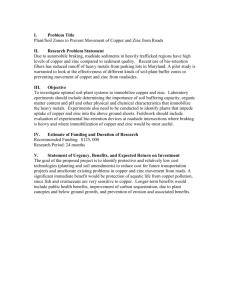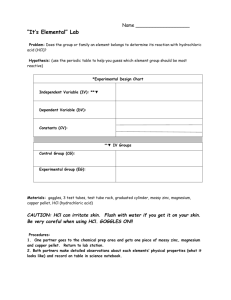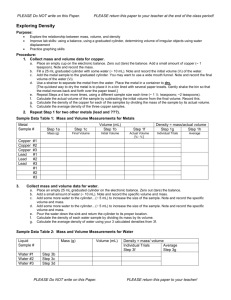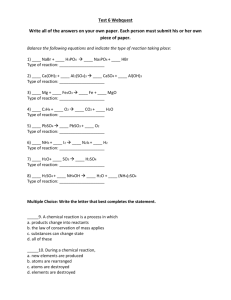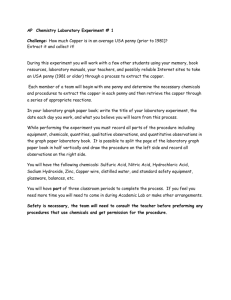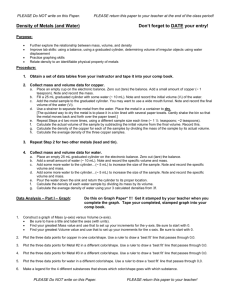Density Of Elements Lab
advertisement
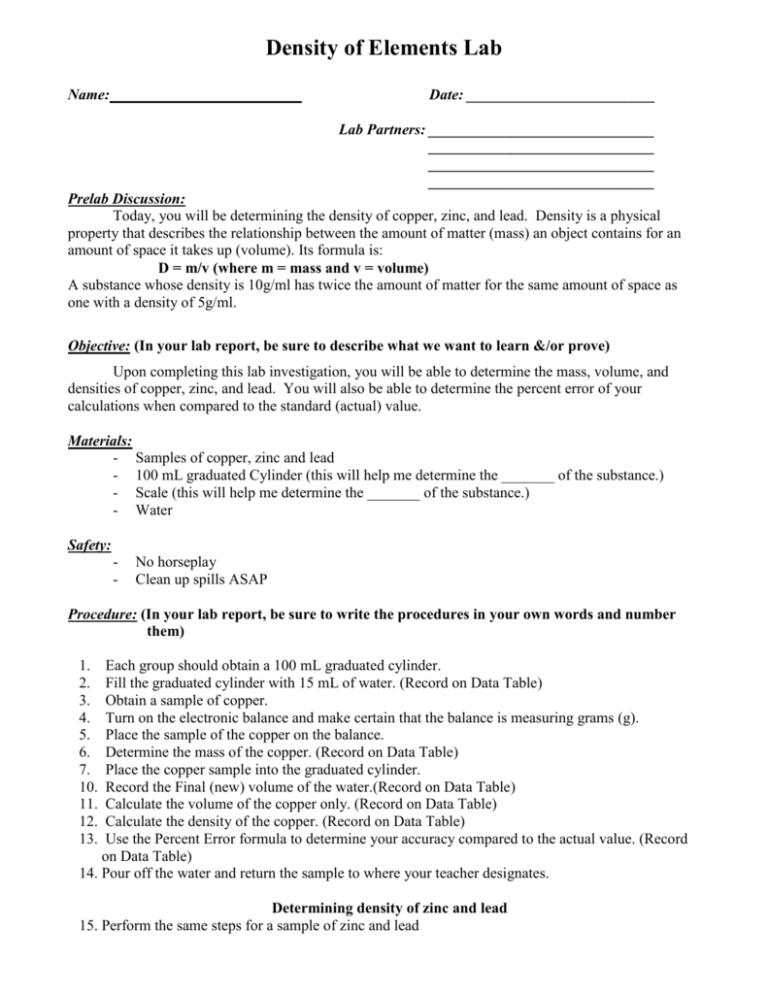
Density of Elements Lab Name: _________________________ Date: _________________________ Lab Partners: ______________________________ ______________________________ ______________________________ ______________________________ Prelab Discussion: Today, you will be determining the density of copper, zinc, and lead. Density is a physical property that describes the relationship between the amount of matter (mass) an object contains for an amount of space it takes up (volume). Its formula is: D = m/v (where m = mass and v = volume) A substance whose density is 10g/ml has twice the amount of matter for the same amount of space as one with a density of 5g/ml. Objective: (In your lab report, be sure to describe what we want to learn &/or prove) Upon completing this lab investigation, you will be able to determine the mass, volume, and densities of copper, zinc, and lead. You will also be able to determine the percent error of your calculations when compared to the standard (actual) value. Materials: - Samples of copper, zinc and lead - 100 mL graduated Cylinder (this will help me determine the _______ of the substance.) - Scale (this will help me determine the _______ of the substance.) - Water Safety: - No horseplay Clean up spills ASAP Procedure: (In your lab report, be sure to write the procedures in your own words and number them) 1. 2. 3. 4. 5. 6. 7. 10. 11. 12. 13. Each group should obtain a 100 mL graduated cylinder. Fill the graduated cylinder with 15 mL of water. (Record on Data Table) Obtain a sample of copper. Turn on the electronic balance and make certain that the balance is measuring grams (g). Place the sample of the copper on the balance. Determine the mass of the copper. (Record on Data Table) Place the copper sample into the graduated cylinder. Record the Final (new) volume of the water.(Record on Data Table) Calculate the volume of the copper only. (Record on Data Table) Calculate the density of the copper. (Record on Data Table) Use the Percent Error formula to determine your accuracy compared to the actual value. (Record on Data Table) 14. Pour off the water and return the sample to where your teacher designates. Determining density of zinc and lead 15. Perform the same steps for a sample of zinc and lead Data Table (In your lab report, be sure to provide a copy of this chart) Graduated Graduated Volume Cylinder - Cylinder of Initial Final substance Volume Volume (mL) (mL) (mL) Mass of substance (g) Observed Density of substance (g/mL) Actual Density of each substance (g/mL) % Error (%) Zinc 7.134 Copper 8.960 Lead 11.300 Calculations: (In your lab report, be sure to show your calculations) Useful formulas: D = m/v (where D= density, m = mass and v = volume) Observed Value – Accepted Value % Error = -------------------------------------------------------- (100) Accepted Value Questions: (In your lab report, be sure to write complete sentences) 1. Assume you doubled the amount of copper you used in the lab. What would happen to it’s: (HINT – before you answer this, create some factitious numbers and use the density formula) Mass? ____________ Volume? _____________ Density? _____________ 2. What are some sources for error? (Identify at least 2) 3. If you were to change these solid samples to liquid, what would happen to its: Mass? ____________ Volume? _____________ Density? _____________ 4. Thinking about the skills you developed in this lab, if someone gave you some pure gold, what can you do determine if their claim is true? Conclusion: Be sure your conclusion relates to the objective and follows the Rubric provided.
